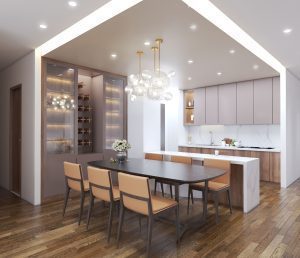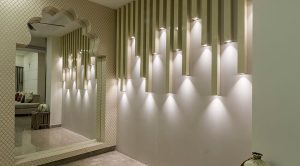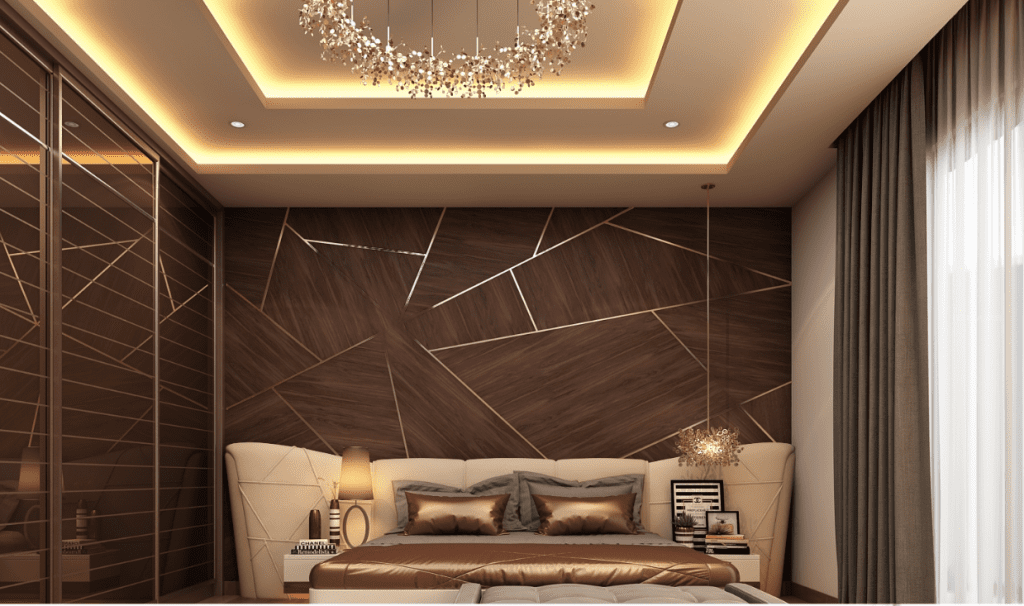Lighting design plays a crucial role in shaping the atmosphere and ambiance of any space. From creating a cozy and intimate setting to highlighting architectural features and artwork, lighting can transform a room and evoke various emotions. We’ll explore the importance of lighting design in setting the mood and enhancing ambiance, along with some critical tips for achieving the perfect lighting scheme in your home.
Understanding the Basics of Lighting Design
Before diving into specific techniques and tips, it’s essential to understand the basics of lighting design. Ambient, task, and accent lighting are the three main lighting categories utilized in interior design.
Ambient lighting provides overall illumination and sets the general mood of a room. It can be achieved through overhead fixtures, recessed lighting, or wall-mounted sconces. Task lighting is focused illumination for specific activities such as reading, cooking, or working. Desk lamps, under-cabinet lights, or pendant fixtures typically provide this type of lighting. Accent lighting draws attention to decorative objects, artwork, or architectural aspects. It can be achieved through track lighting, picture lights, or wall washers.
Creating Layers of Light
To achieve a balanced and visually appealing lighting scheme, it’s essential to create layers of light that combine ambient, task, and accent lighting. By layering different types of lighting, you can control the intensity, direction, and focus of illumination to suit each space’s specific needs and mood.

Start by establishing a base layer of ambient lighting to provide overall illumination and establish the general mood of the room. Then, add task lighting to provide focused illumination for specific activities or areas. Finally, incorporate accent lighting to highlight architectural features, artwork, or decorative elements and add visual interest to the space.
Using Dimmers and Controls
One of the most effective ways to enhance ambiance and set the mood with lighting is to use dimmers and controls. Dimmers allow you to adjust the brightness of your lights to create different atmospheres and cater to different activities or occasions. For example, you can dim the lights for a cozy movie night or increase the brightness for a lively dinner party.
In addition to dimmers, consider installing lighting controls that allow you to adjust the lighting levels and settings throughout your home. Intelligent lighting systems offer advanced features such as remote control, programmable schedules, and customizable scenes, allowing you to create the perfect ambiance with the touch of a button.
Considering Color Temperature and Color Rendering
When selecting light fixtures and bulbs for your home, consider the colourlight’s temperature and colour rendering index (CRI). The term “colour temperature,” expressed in Kelvin (K), describes how warm or cold the light is. Lower colour temperatures (around 2700K) emit a warm, yellowish light ideal for creating a cozy and inviting atmosphere, while higher colour temperatures (around 5000K) emit a cool, bluish light that is more energizing and stimulating.

The CRI measures the ability of a light source to render colours accurately compared to natural sunlight. Look for light bulbs with a high CRI (above 80) to ensure that colours appear vibrant and accurate to life, enhancing your space’s ambiance and visual appeal.
Incorporating Decorative Lighting Fixtures
In addition to providing illumination, lighting fixtures can serve as decorative elements that enhance the ambiance and style of your home. Consider incorporating statement chandeliers, pendant lights, or wall sconces that complement the overall design aesthetic of your space and add a touch of personality and flair.
Choose fixtures with exciting shapes, materials, and finishes that reflect your style and create visual interest. Whether you prefer sleek and modern fixtures or vintage-inspired designs, lighting fixtures can significantly impact the ambiance and ambiance of your home.
Conclusion:
Lighting design is a powerful tool for shaping the atmosphere and ambiance of your home. By understanding the basics of lighting design, creating layers of light, using dimmers and controls, considering colour temperature and colour rendering, and incorporating decorative lighting fixtures, you can create a space that is not only functional and practical but also visually stunning and emotionally engaging. So why take your lighting design to the next level and transform your home into a haven of warmth, comfort, and style?
